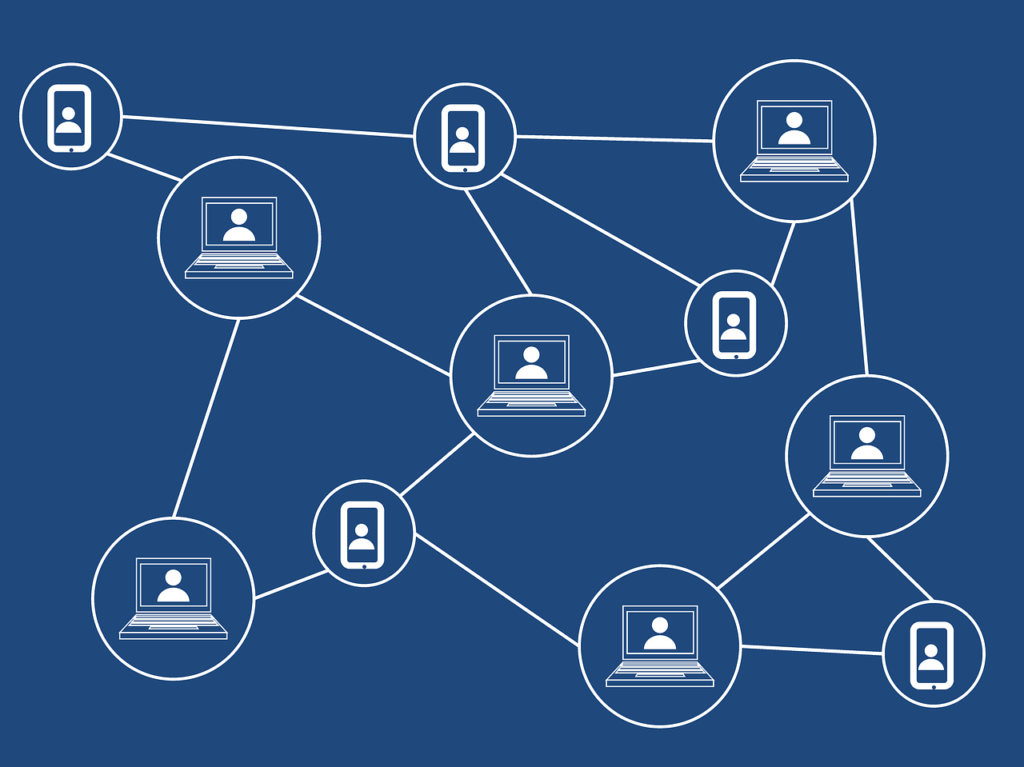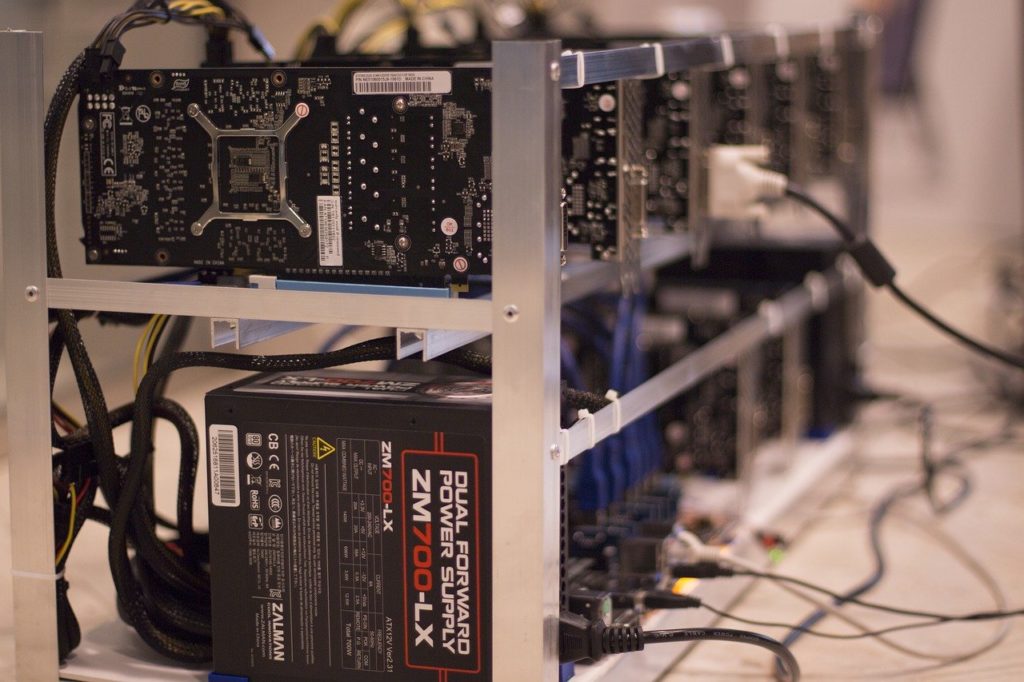When Bitcoin came along, it introduced a whole new world of digital currencies that are powered by various technologies, such as blockchain and cryptography. The two come together to create a distributed ledger system that is underpinned by an asset – represented by a token or coin.
The technology is new, introduced only within the last two decades and is substantially newer than even the internet that many people still struggle with. If you are reading this you are clearly more advanced than most, but might need some additional information, understanding, or guidance when it comes to cryptocurrency technology.
That’s why we’ve created an in-depth guide to all things crypto, from the very blockchain technology it is built on, to the cryptography that protects these assets.
How Does Cryptocurrency Work? A Detailed Guide To Blockchain And Cryptography
The blockchain acts as a complete record of all transactions made across the network. Before the coin arrives, however, there’s a unique verification process involved called mining.
Mining utilizes computing power to solve complex mathematical equations that unlock a block reward from the protocol and verify each transaction. The block reward is paid in the form of the underlying digital currency, providing an incentive to keep processing power flowing. A miner can also earn cryptocurrency from transaction fees.
Crypto assets themselves feature powerful encryption technology. Each coin has a public key acting as a wallet address and a private key which is used to sign transactions digitally with a unique digital signature.
Here is a more detailed explanation of other important areas of cryptocurrency technology.

Blockchain
Almost every type of cryptocurrency is built on top of distributed ledger technology called blockchain. Blockchain was invented with the debut of Bitcoin, also created by Satoshi Nakmoto, although various precursors exist.
It distributes each cryptocurrency’s ledger across a vast network of nodes. Nodes can act as validators in some types of cryptocurrencies, while others rely on other mechanisms for verification purposes and security analysis.
Because of the wide decentralized distribution, the network is autonomous and fully secure.
Public Ledgers
Another interesting attribute of cryptocurrency technology is that anyone can view transaction information, wallets, and more through a fully public and transparent ledger. Using a blockchain explore, all information is available for all to see.
Thanks to the cryptography involved in crypto, there’s no private information attached to the blockchain, only a series of numbers and letters representing addresses and hash data.
Transactions
Transactions are made from peer-to-peer, to or from anywhere in the world, all without a third party required. Cryptocurrency technology lets users be their own bank, sending cryptocurrency with ease.
Each transaction is added permanently to the blockchain, and cannot be altered in any way. Even if developers decide to launch a new currency instead, the blockchain must be forked, leaving the previous chain intact along with all transaction information.
Mining
The so called money supply of each virtual currency is created through a process called mining. Unlike gold, it does not require picks, forks, and digging. It does, however, require computation power from powerful machinery called miners, which provide hash rate that keeps the network secure and in operation.
Proof-of-Work
The process is called proof-of-work and is the cryptocurrency consensus mechanism that many coins are based on, including Bitcoin.
Proof-of-work prevents an issue called double-spending, which was a major challenge in previous attempts at forms of digital cash.

Adaptive Scaling
Adaptive scaling of certain types of blockchain technologies can be achieved through a proof-of-stake process, sharding, and other scaling techniques.
Scaling of blockchain throughput increases transaction speed, lowers fees, and increases productivity in the network.
Block Reward
For the efforts and all the processing power that miners give to the Bitcoin network, they receive something called a block reward. Miners also make revenue from fees, however, the real motivation is to get coins.
For example, each block reward in Bitcoin is currently 6.25 BTC. Previously, it was 12.5 BTC and in several years it will be even less.
Halving
Roughly every four years, the Bitcoin protocol as well as some other coins based on its code, will slash the block reward in half. This makes for a seismic shock to the entire ecosystem, that eventually favors price appreciation by throwing off the balance of supply versus demand.
Based on the halving and the low, 21 million BTC supply, the cryptocurrency is projected to become extremely valuable. The halving is a unique factor that causes the asset’s bubble effect, sucking in more participants.
When gold is in a bull market, miners produce more metal to compensate until supply meets demand. In Bitcoin, when demand rises, supply is instead slashed and price rises as a result.
Decentralization
Crypto assets are widely distributed across the globe, and aren’t tied to a government like fiat currencies. This makes them completely dependent on the underlying protocol, but also means full autonomy.
Decentralization enables a variety of benefits for the cryptocurrency and blockchains themselves, due to better censorship resistance, avoidance of 51% attacks, and much more. Peer-to-peer networks have also shown exponential growth according to data, which bodes well for crypto investors.
Wallets
Each cryptocurrency wallet includes a public key which is essentially the public address users must input to send or receive crypto assets. A private key must be stored safely, or the account can be accessed by a hacker, or bad actor. Each public or private key utilizes cryptography and is a string of randomized letters and numbers.
Wallets can be kept offline for cold storage and require USB or bluetooth devices, while hot wallets are directly connected to the web via apps or a desktop computer.
Anonymity
To this very day, no one knows the true identity of Satoshi Nakamoto, the pseudonymous creator of Bitcoin and blockchain. In essence, this person created all of crypto and changed the world of finance forever, yet no one will ever know who exactly it was thanks to the anonymity this person achieved.
Staying true to anonymity, Nakamoto made sure Bitcoin transactions had a layer of pseudo anonymity also. Transactions can be tied to users, but it isn’t easy and requires matching blockchain transactions to bank records and other paper trails.
Cryptography
According to Wikipedia, “cryptography is the practice and study of techniques for secure communication in the presence of third parties called adversaries. More generally, cryptography is about constructing and analyzing protocols that prevent third parties or the public from reading private messages; various aspects in information security such as data confidentiality, data integrity, authentication, and non-repudiation are central to modern cryptography.
Furthermore, it says that “modern cryptography exists at the intersection of the disciplines of mathematics, computer science, electrical engineering, communication science, and physics. Applications of cryptography include electronic commerce, chip-based payment cards, digital currencies, computer passwords, and military communications.”
Cryptocurrency assets like Bitcoin and Ethereum are also included in that list.
Quantum Computing
One of the biggest fears facing the future of cryptocurrency technology is quantum computing. Ultra powerful computers complete processes at light speed, far faster than current computers. These powerful machines can theoretically crack the cryptography protecting cryptocurrency assets.
This tech is far ways off from being a major problem for the cryptocurrency sector, and new coins are releasing that are quantum resistant.

Conclusion: Cryptocurrency Technology Explained, What To Do Next
Now that you know how cryptocurrency works, it is time to put your knowledge and skills to the test and get you started. Using PrimeXBT you can buy Bitcoin and then from there, tap into built-in charting tools to get a one-up over the rest of the world.
Once you know what you want to do, you can hold BTC, begin trading CFDs for a variety of markets, and much more. PrimeXBT offers exposure to Bitcoin, Ethereum, Litecoin, EOS, and XRP, as well as forex, gold, oil, commodities, and stock indices.
The one stop shop has all the tools traders need to get the job done and make money with cryptocurrency. Even better, you don’t even fully need to know everything about how cryptocurrency works, as the platform is extremely user friendly, simple to use, and features all kinds of helpful guides and blogs. There’s also a help center and 24/7 live customer support for when anyone needs it.
Can Cryptocurrency Be Converted To Cash?
All cryptocurrency assets can be converted to cash through a cryptocurrency exchange. Using such a platform, investors can buy or sell assets in exchange for another. In this case, someone would trade Bitcoin, for example, for USD. The USD would then be transferred to a bank account connected to an exchange. This is called a fiat onramp.
How Do You Make Money With Cryptocurrency?
There are several ways to make money now in cryptocurrency beyond just investing alone. Of course, you can still buy and HODL, but there’s also staking, lending, and of course, cryptocurrency trading which is the most profitable and rewarding of all.
How Do I Start Investing In Cryptocurrency?
It all starts with buying Bitcoin or another cryptocurrency using a credit card or debit card. From there, you will need to choose an investment strategy such as trading, or buy and HODL.
What Exactly Is Blockchain?
Blockchain is the incredible and innovative technology that powers Bitcoin and other cryptocurrency assets. It is a distributed ledger system underpinned by a cryptocurrency.
How Long Does It Take Mine 1 Bitcoin?
A block reward in Bitcoin is generated every ten minutes, resulting in 6.25 BTC. There’s no way to do this faster, even for just one Bitcoin. Blocks can sometimes take longer to confirm, depending on how high the fees are and miner prioritization.
The content provided here is for informational purposes only. It is not intended as personal investment advice and does not constitute a solicitation or invitation to engage in any financial transactions, investments, or related activities. Past performance is not a reliable indicator of future results.
The financial products offered by the Company are complex and come with a high risk of losing money rapidly due to leverage. These products may not be suitable for all investors. Before engaging, you should consider whether you understand how these leveraged products work and whether you can afford the high risk of losing your money.
The Company does not accept clients from the Restricted Jurisdictions as indicated in our website/ T&C. Some services or products may not be available in your jurisdiction.
The applicable legal entity and its respective products and services depend on the client’s country of residence and the entity with which the client has established a contractual relationship during registration.




